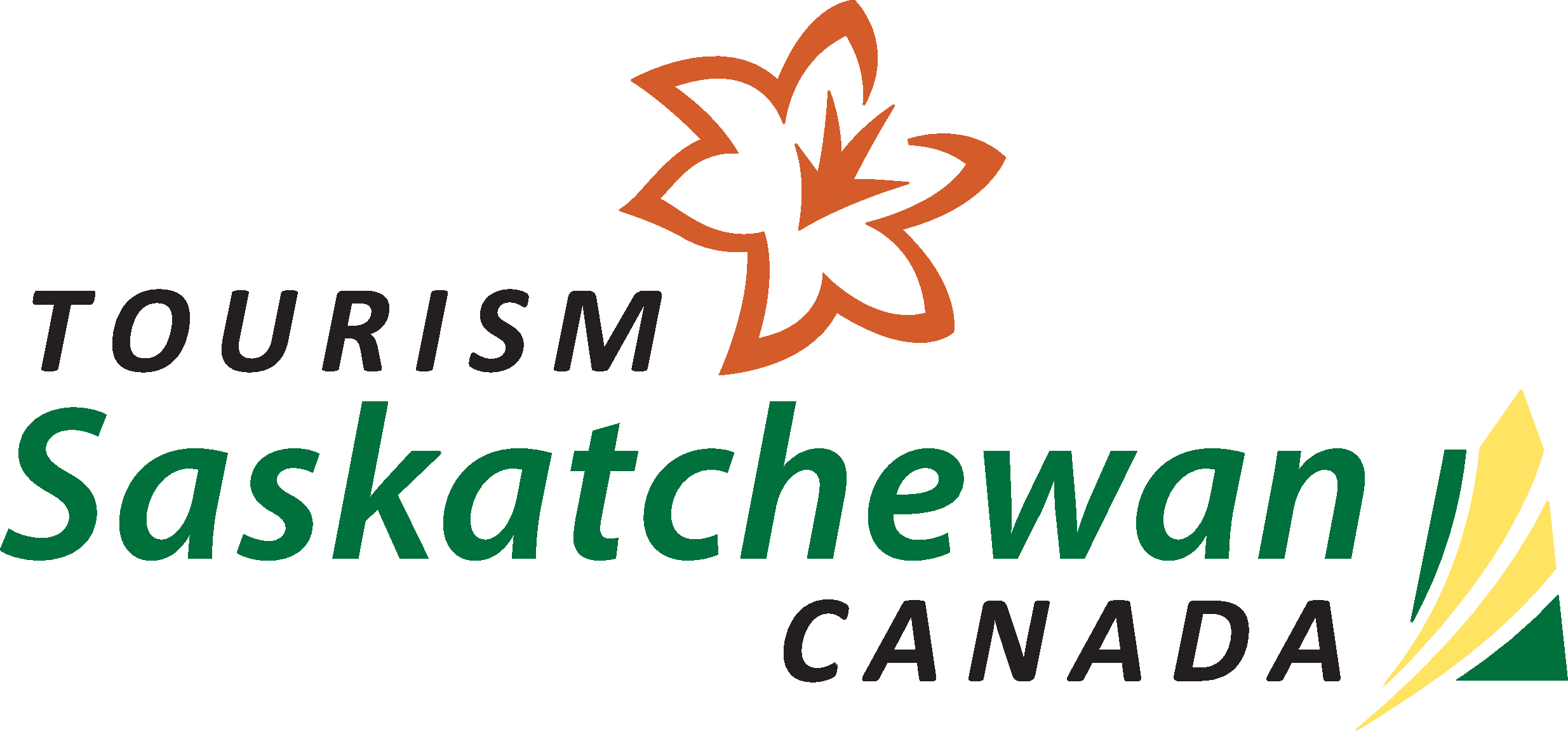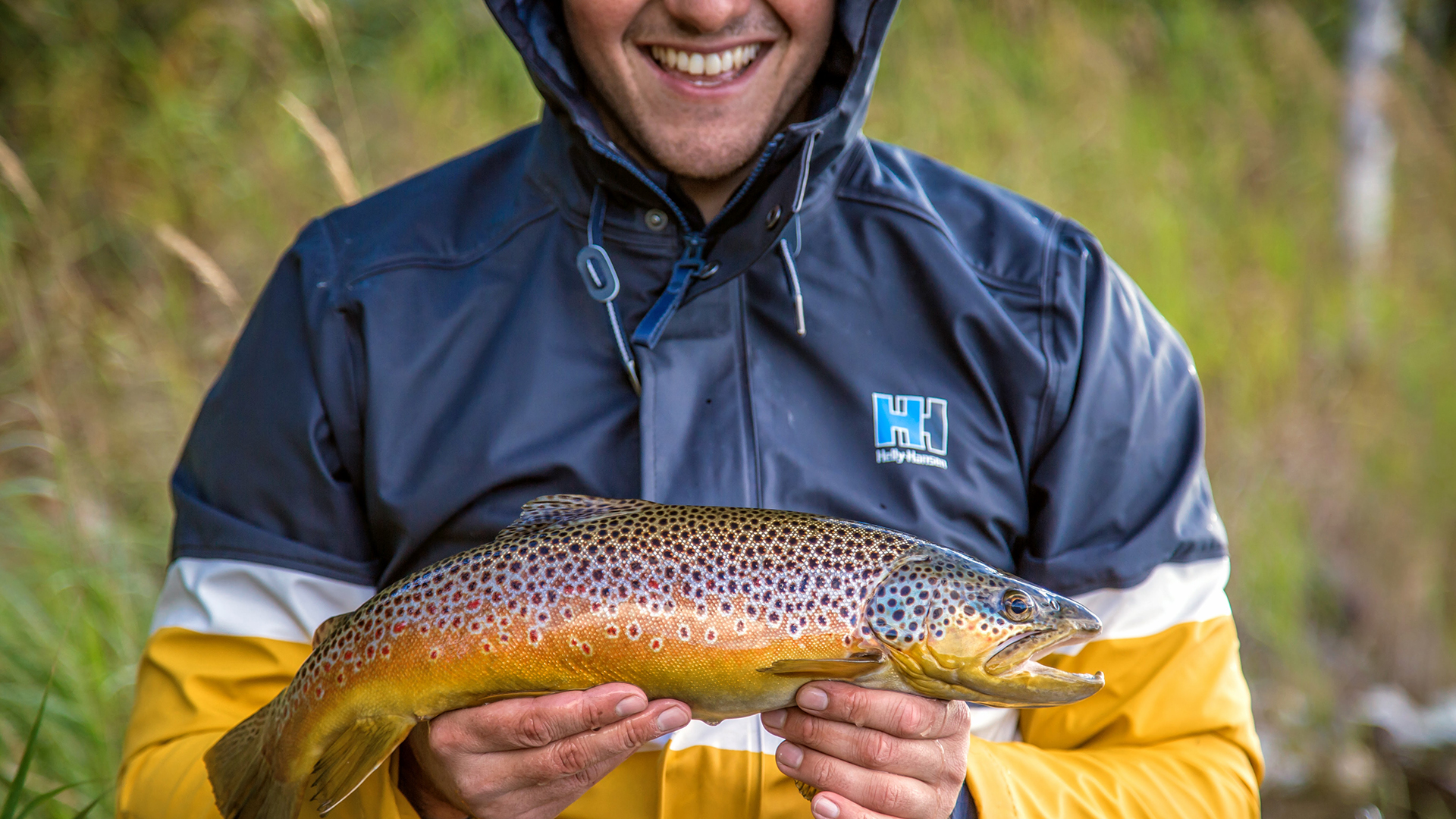Fly Fishing Forrest Lake and the Semchuk Trail
Introductions
I am a husband, father of twins and fly fishing fanatic who loves to share interesting facts and stories, and explore places off the beaten path. I live in Saskatoon, work in the North and love to vacation locally.
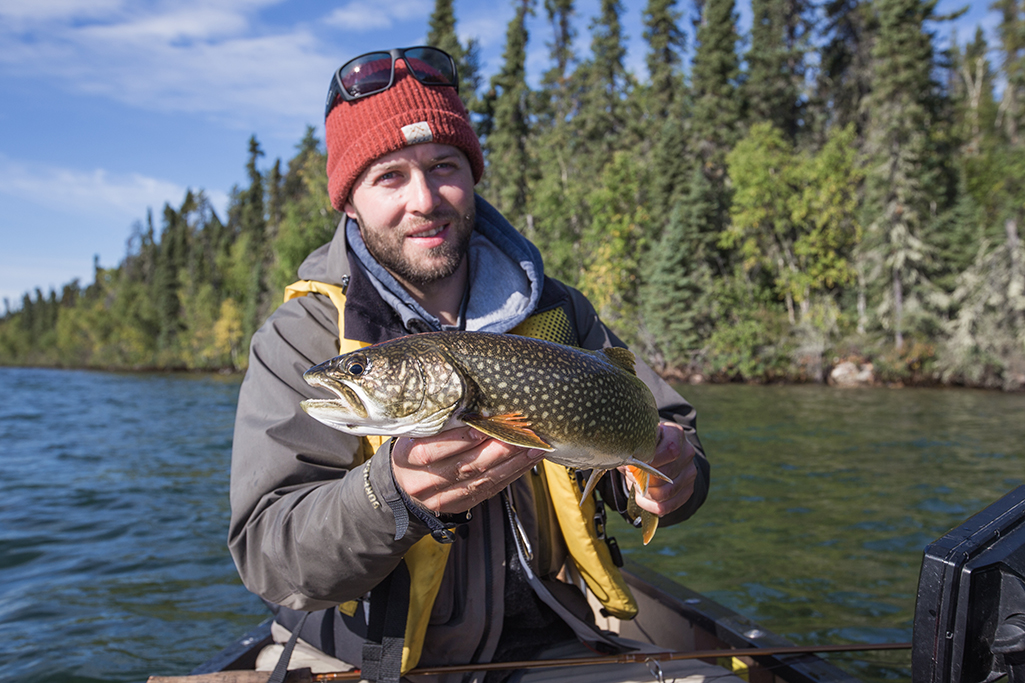
Myself with the first of many lake trout caught fly fishing at Forrest Lake
My History With The Area
Around 20 years ago my father, brother and I made our first fishing trips north of La Loche up the Semchuk Trail. We would stay at the outpost camp on the shores of Forrest Lake and target lake trout, northern pike and walleye. We always packed at least two spare tires and a pile of tools, preparing ourselves for whatever may come our way.
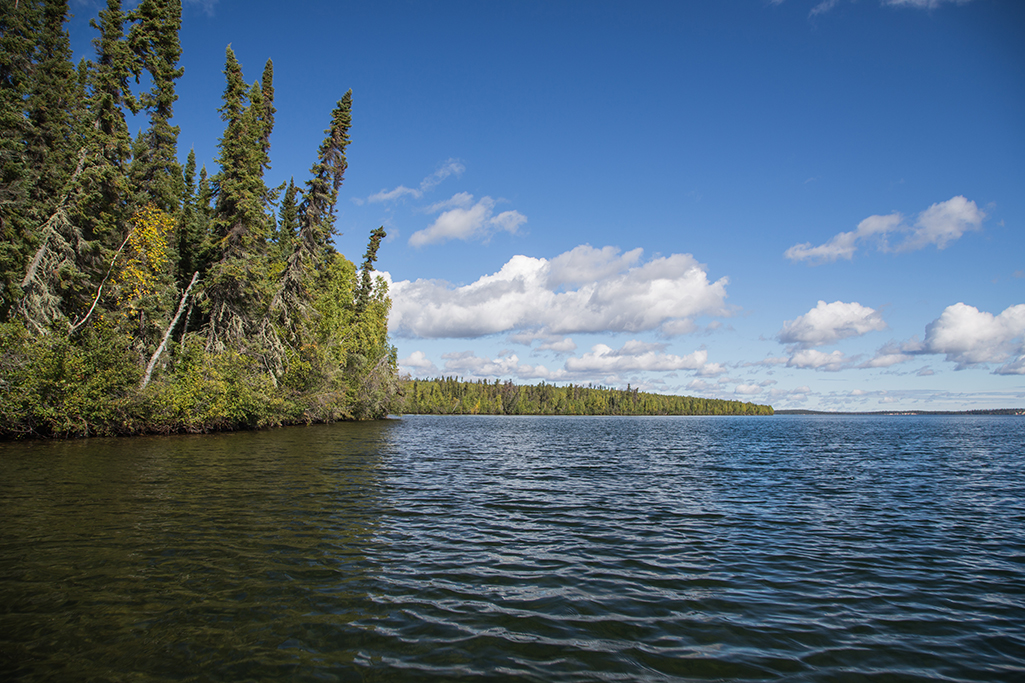
Forrest Lake
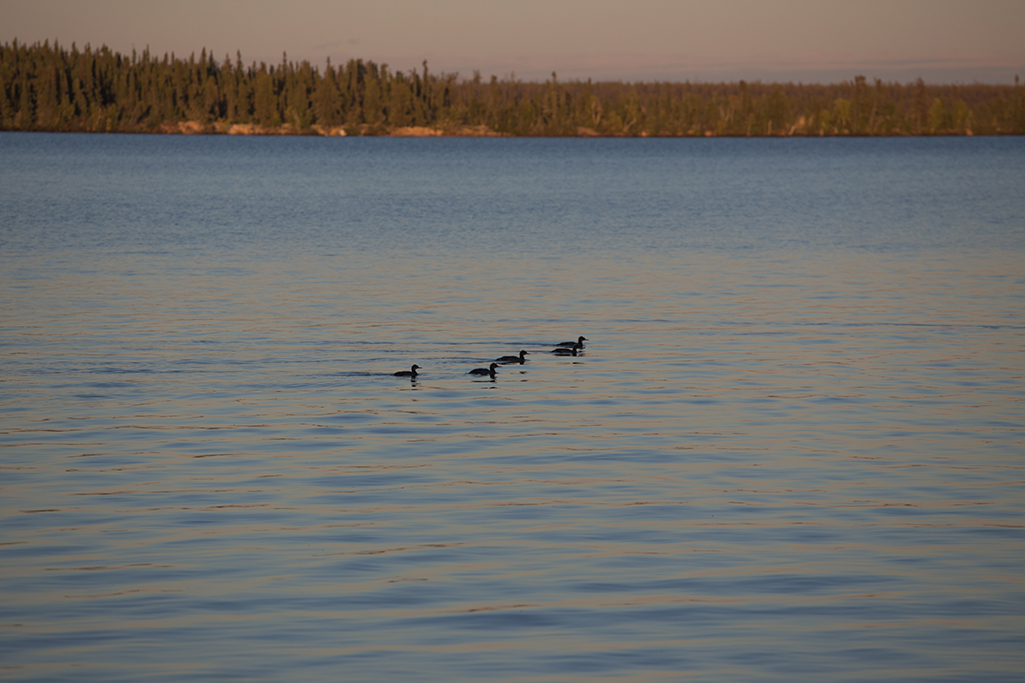
A water dance (group name) of Grebes
All these years later, the things I remember most about those trips would seem inconsequential at the time. My father would pack a few cassettes and blast gospel music, Metro (a Ukrainian Canadian cultural icon) and Johhny Horton for much of the trip. I vividly remember us all trying to sing the bass parts of Johhny Horton’s North to Alaska and Metro’s Big Steve. I also remember hammering wooden wedges into the dash of our old farm truck in an effort to pacify its shaking and squeaking. The noise and vibration seemed to progressively worsen north of Buffalo Narrows, becoming nearly unbearable after La Loche.
The amazing fishing and family experiences we had at the lodge are most likely the reason I ended up pursuing my current career path. As a Geologist my job frequently takes me into the remote wilderness and gives me opportunities to fish and explore places that few people have ever seen.
The Semchuk Trail Now
Much has changed over the years and I am happy to say roads have improved greatly. The improvements to the northern roads are partially due to the exploration for the mineral deposits found in the region.
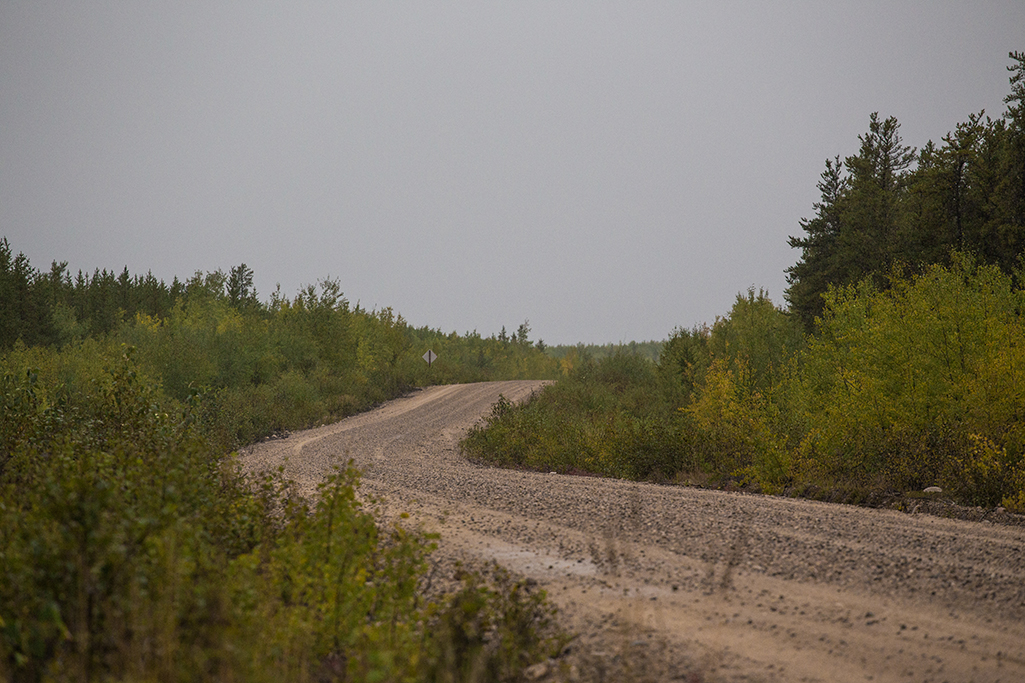
Nicely graded road on the Semchuk Trail near kilometer 100
Geography of the Region
The lakes and geography of northwest Saskatchewan is not like the Northeast and that is due to its geology. There is some Canadian Shield in the Northwest but many of the lakes and rivers are overlying the much softer and younger Cretaceous shales, mudstone and sandstones. The end result is larger average lake sizes with more gradual drop offs and basin-like features.
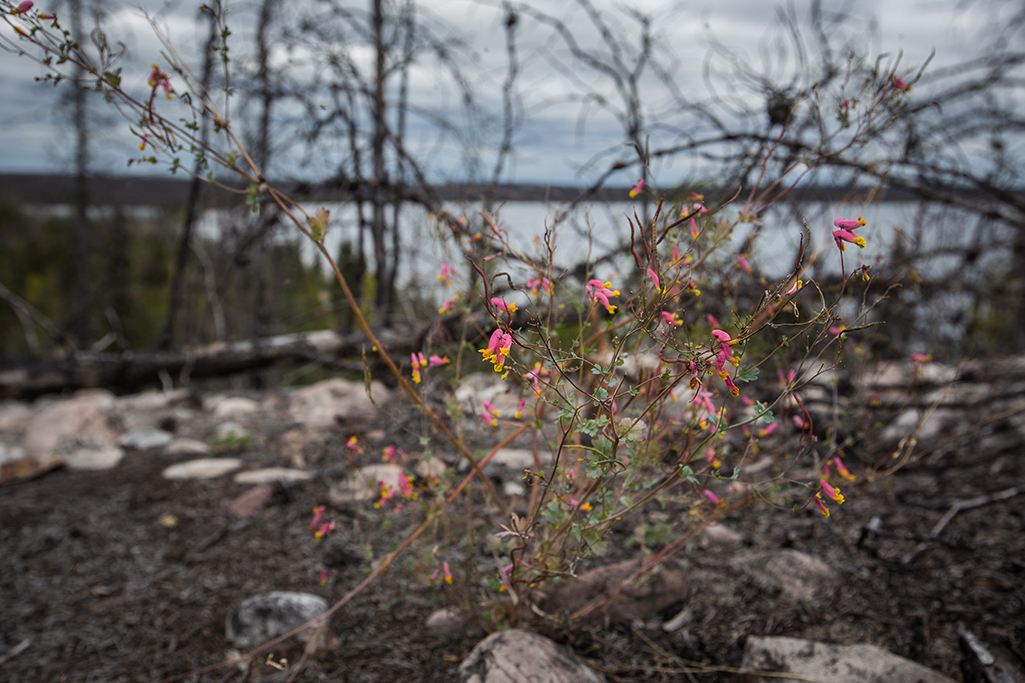
Pink Corydalis growing from the ashes of a recent burn on Beet Lake
Preparing for Northern Excursions
When I was presented with the opportunity for an early fall trip to Forrest Lake, I jumped at the chance and quickly contacted a friend who I frequently fly fish with to coordinate dates, food and boats. My fly fishing partner Aidan is an experienced fly fisher and an MD who was finishing up a contract in Meadow Lake. He was excited to catch his first lake trout and see a part of the province he has heard little about.

Our truck fully loaded on the trail by Patterson Lake
Extra fuel, a box of tools, spare tires, warm clothing, dry bags, bear spray and other bear deterrents are all recommended to those looking to travel and camp in the remote North.
Anyone flying into an outfitters camp can be assured their hosts will be looking out for their safety and scaring any nuisance animals away. Packing and preparation time is dramatically reduced by using a local outfitter and this is what I would recommend to anyone visiting the area for the first time.
The Road Trip North
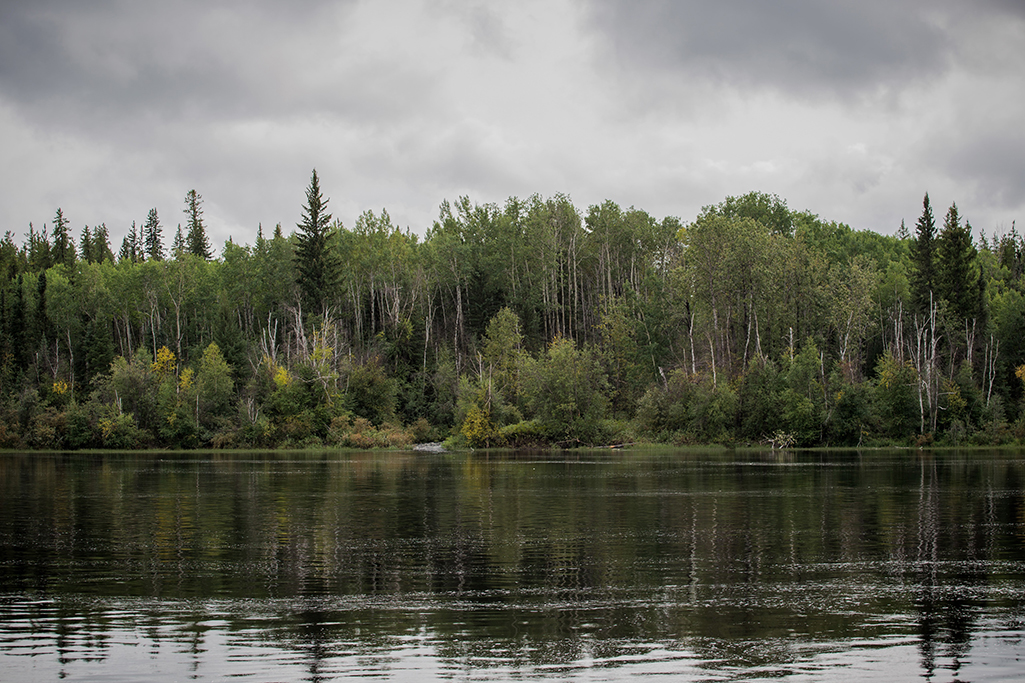
Sinclair Creek flowing into the Clearwater River
Clearwater River Provincial Park is a beautiful location with bathrooms and garbage receptacles placed throughout the sites. It is the only location I know of in North Western Saskatchewan that you can see bedrock along the highway. Thousands of years of erosion by the Clearwater has exposed the Cambrian Shield, resulting in large rapids below the bridge that look like they would provide some great white water canoeing and kayaking.

The Clearwater bridge
Pike and walleye are the species most commonly caught around the bridge and campsites but other species noted as present in the river include whitefish, arctic grayling and even lake trout. I have heard several people say grayling can be caught at the bridge and nearby rapids but have not been fortunate enough to catch them.

Looking upstream from the campsites
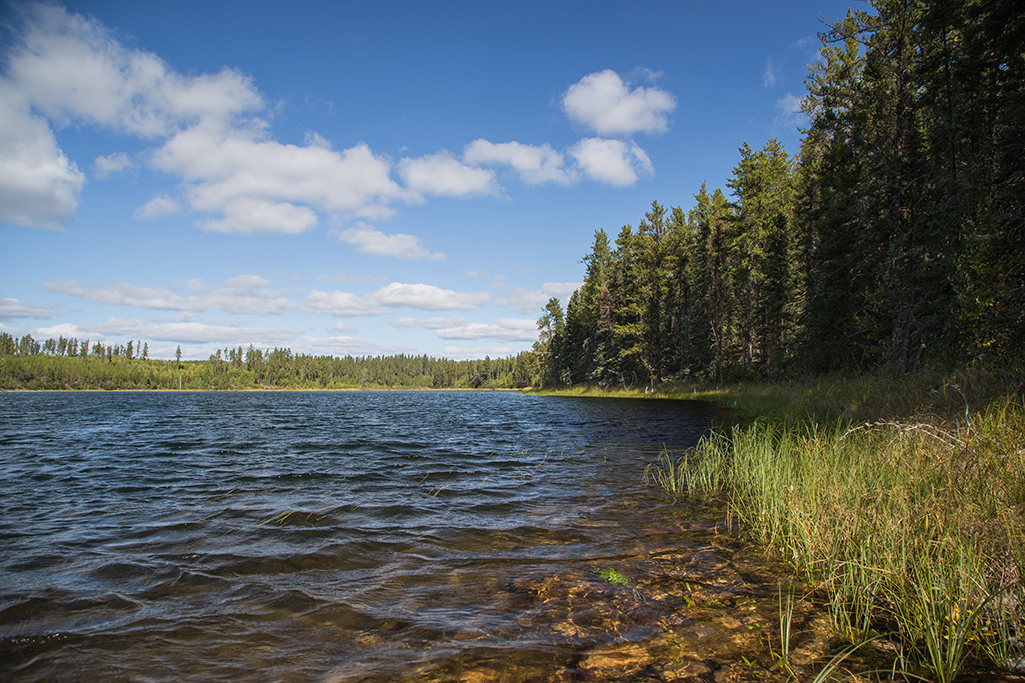
Ed’s Lake
These sites do not have any garbage or bathroom facilities, are not maintained and are best suited for tents and truck box campers. The cleanliness and state of the campgrounds depends on their visitors, so don’t hesitate to clean up any messes or litter you may find. The small size, steep banks and primitive boat launches make them ideal for fly fishers because they are best fished with small water craft like canoes, kayaks and float tubes.
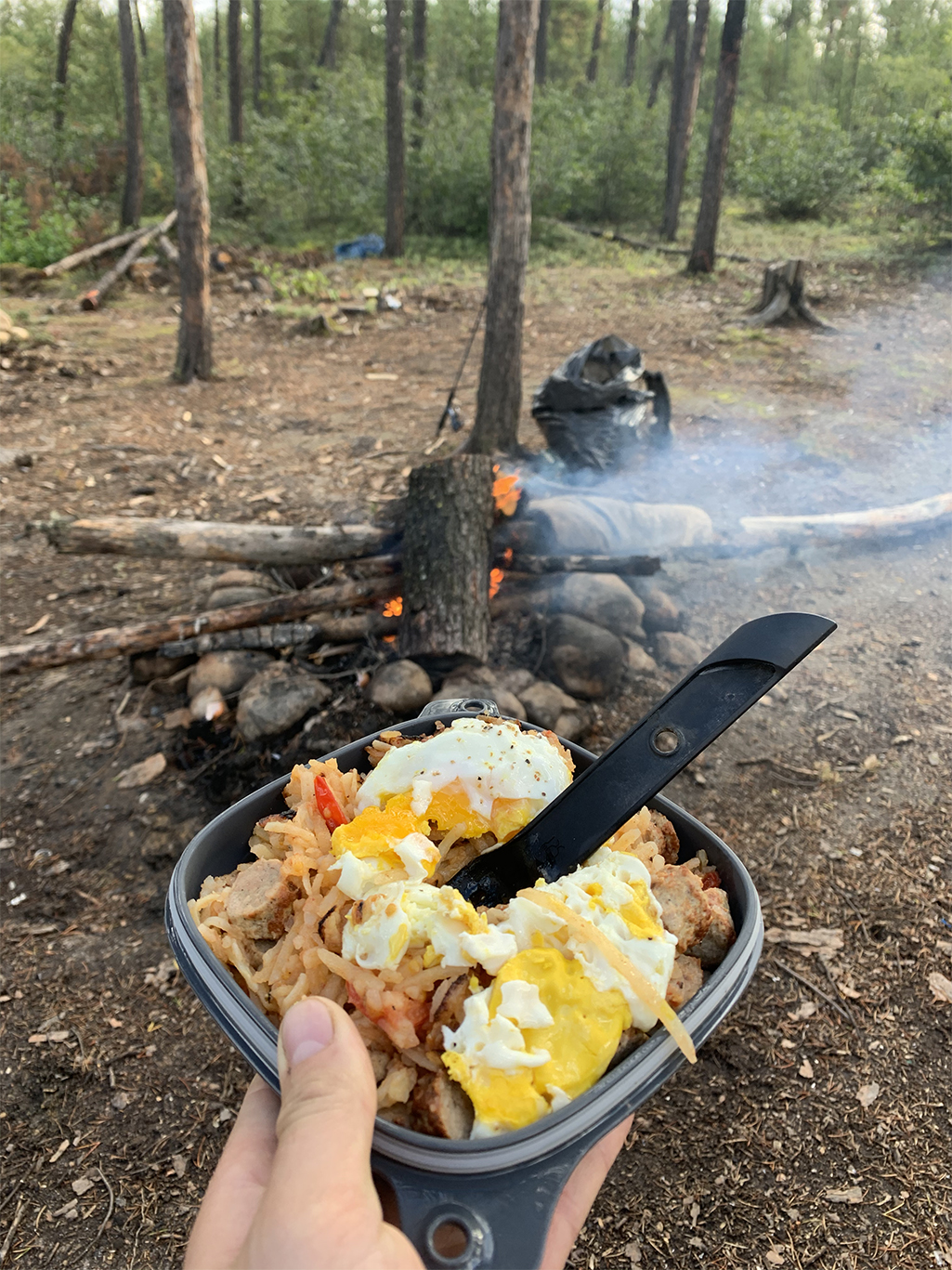
Our first campfire breakfast
Trout are infamously finicky and my last fall fishout produced poor results at Ed’s and Amber but excellent fishing at Fontaine Lake. I am glad to say that this time we managed to do much better at Ed’s and Amber and even managed a few bigger brook trout and brown trout.
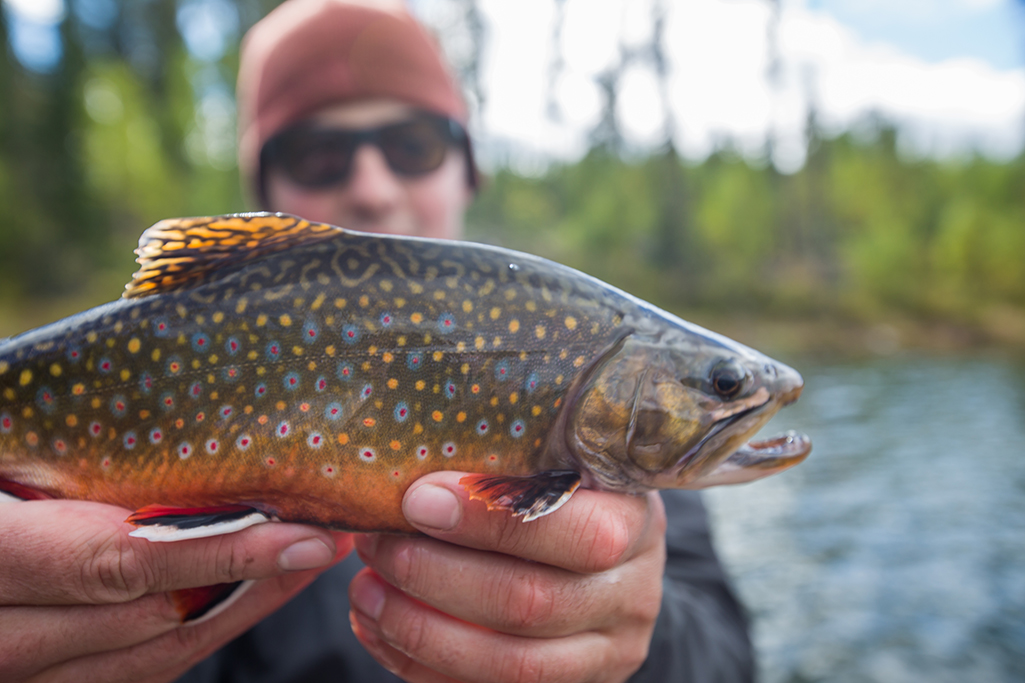
A small but beautiful Brook Trout

Our biggest brown trout of the trip

Aidan laughing as I comment on how similarly dressed he is to his brown trout

A colourful chunky little brook trout
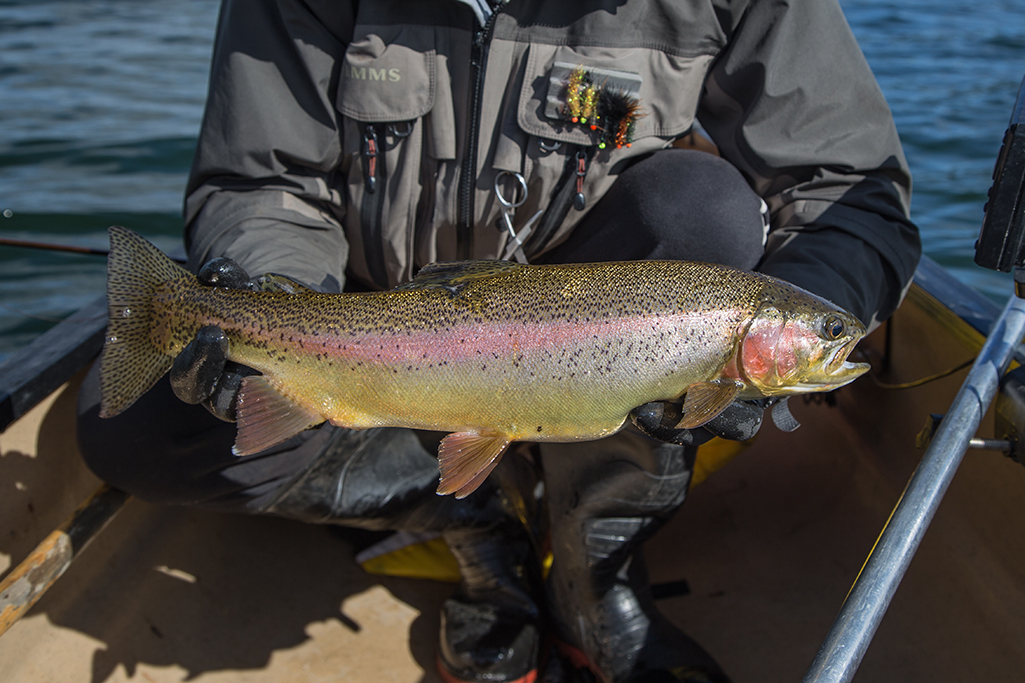
Our biggest rainbow trout
Forest Lake Outfitters
The main camp for Forest Lake Outfitters is actually located on Beet Lake, while the original older and more primitive outpost is on Forrest Lake. The main camp has three modern cabins with most of the amenities of home and will accommodate four to six people. The rates are very affordable and those interested in visiting can read more about Forest Lake Outfitters at www.forestlakeoutfitters.ca.
One of the many things I love about fishing at Forrest Lake is that you always have the option of boating up- or down stream into other water bodies like Patterson Lake, Beet Lake, Naomi Lake
or the Clearwater River. Each body of water has a different distribution of species and between all of them you can target lake trout, northern pike, walleye and arctic grayling. While these lakes do hold walleye up to 8 lbs. and the occasional lake trout up to 20 lbs., many of the anglers targeting trophy fish are after large northern pike.
The lodge provides all of their regular season clients with boats, fuel and engines but on this out-of-season trip I opted to use my own boats and unfortunately a previously unknown stress fracture on our 16 ft. aluminum boat opened up during transport. This left us with no choice but to fish from the transom back canoe we had brought for fishing smaller lakes. Having the smaller vessel left us feeling a little hesitant about traveling large distances to fish, so we stuck to Forrest Lake, a stretch of water referred to as ‘the channel’ and Beet Lake. The areas we fished were prime pike and lake trout water but not the walleye and grayling spots we had hoped to also visit on Patterson, Naomi and the Clearwater River.
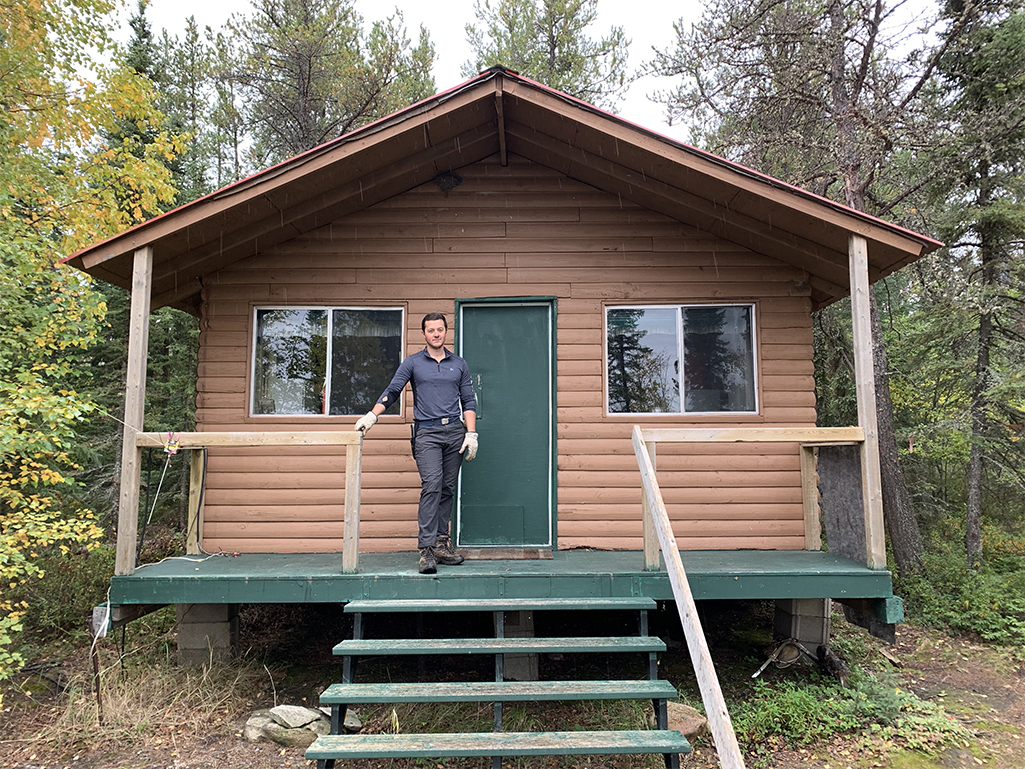
Outpost Cabins
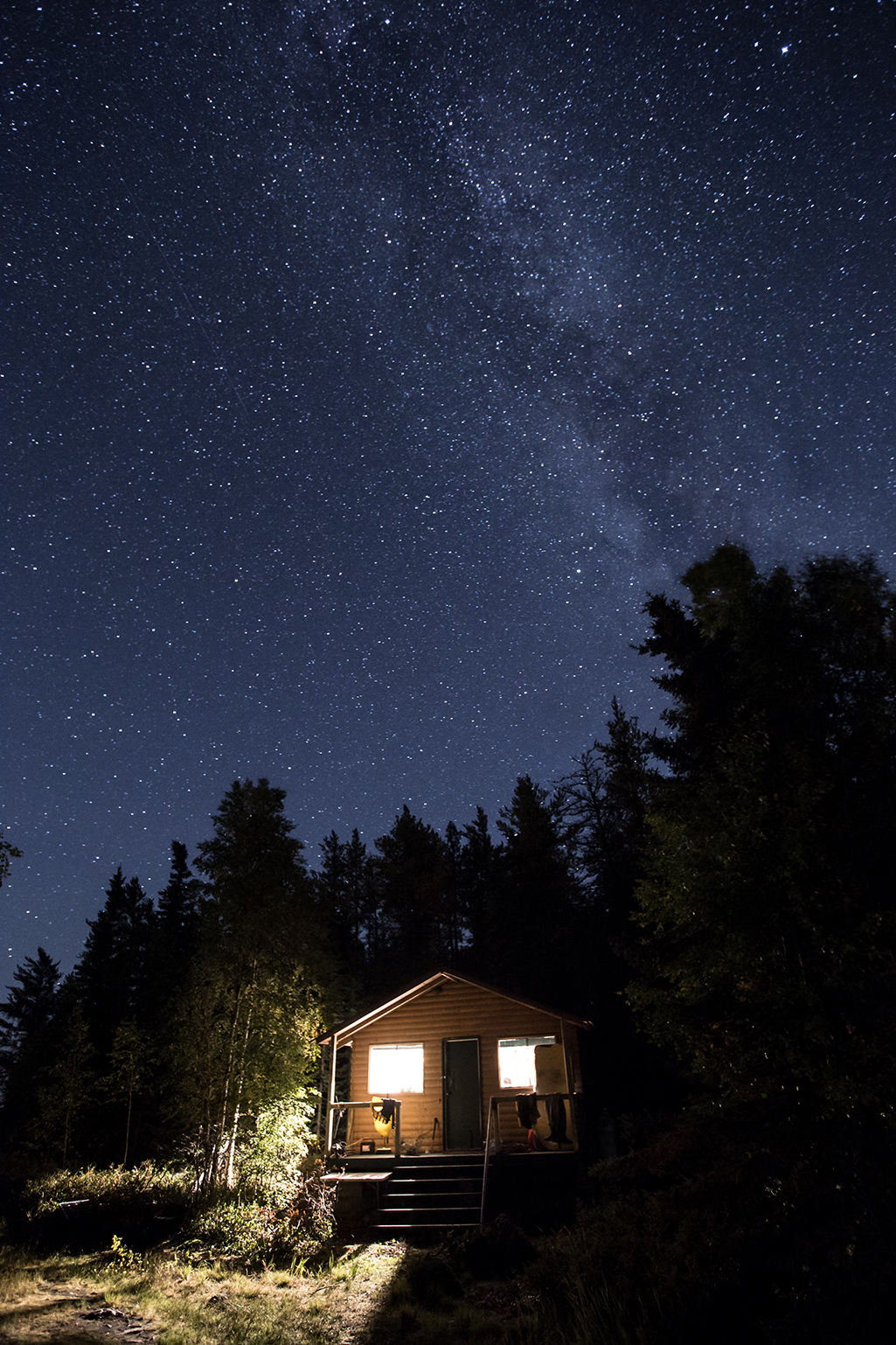
Windy days and calm starry nights
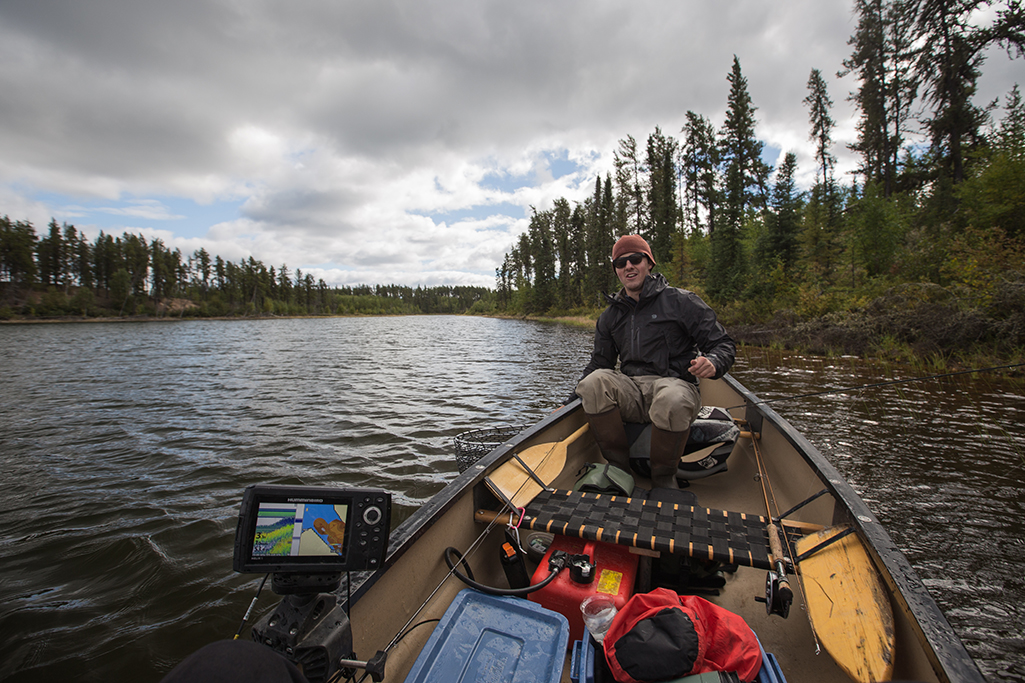
The canoe in all its glory (max speed 13 kph)
Fly Fishing at the Lodge
With all the wind and cool weather, we knew the fish would be coming into shallower water and had hoped that it would present us with some fly fishing opportunities for lake trout. Lake trout are a cold water species and for much of the open water season they are found in deeper cooler water making them difficult to target fly fishing. While fly fishing deep water is possible it doesn’t provide the entertainment of casting and watching fish follow and strike. Spring provides the best opportunities to fly fish lake trout but there is also a narrow window that they can be targeted in the fall. Lake trout are fall spawners and should not be targeted while spawning which typically occurs at water temperatures between 9 and 13 degrees celsius.
The shallow water bite we had hoped for indeed did happen and the quality of fishing we experienced exceeded anything we could have imagined. We were catching high numbers of lake trout anywhere from 3 to 20 feet of water and frequently had double headers. The physical demands of casting and reeling in the abundant fish began to take a toll on our arms and we found trolling flies a more relaxing and a less demanding way to enjoy our time on the water.

One of many double headers
We saw many fish swimming the rocky shoals and sandy flats. When the right conditions were encountered, a well-placed cast would allow us to watch a fish or two turn and chase a fly as it flew back towards the boat. The faster we retrieved the fly the more eager they seemed to bite. Large shiny streamers seemed to work best and an ugly tinsel streamer I had tied years ago proved particularly effective in the mornings.
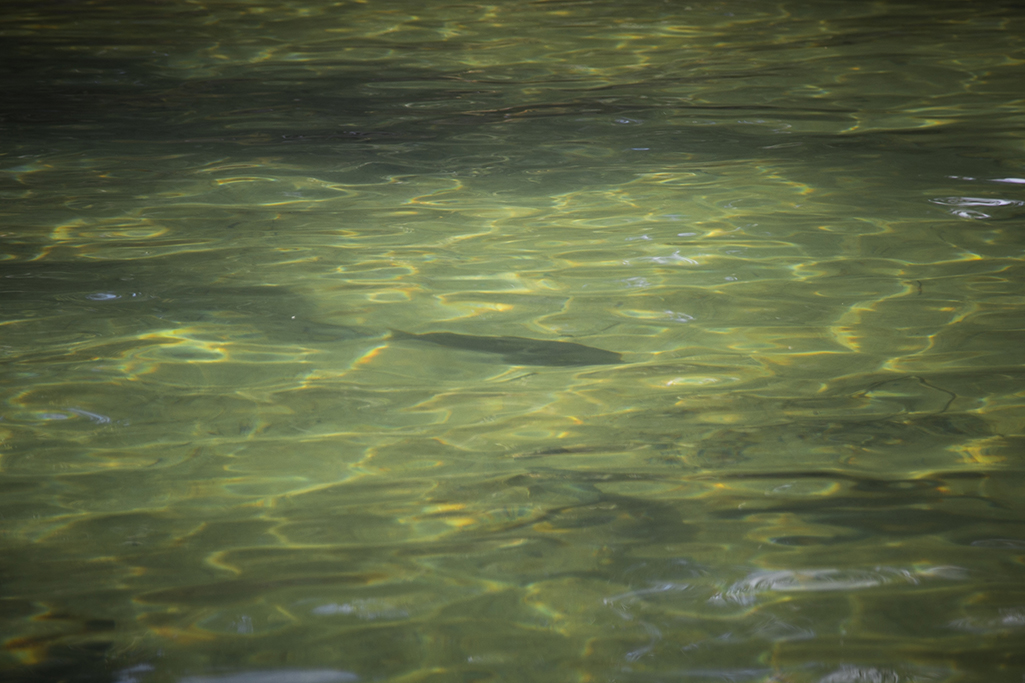
A lake trout cruising along the rocks
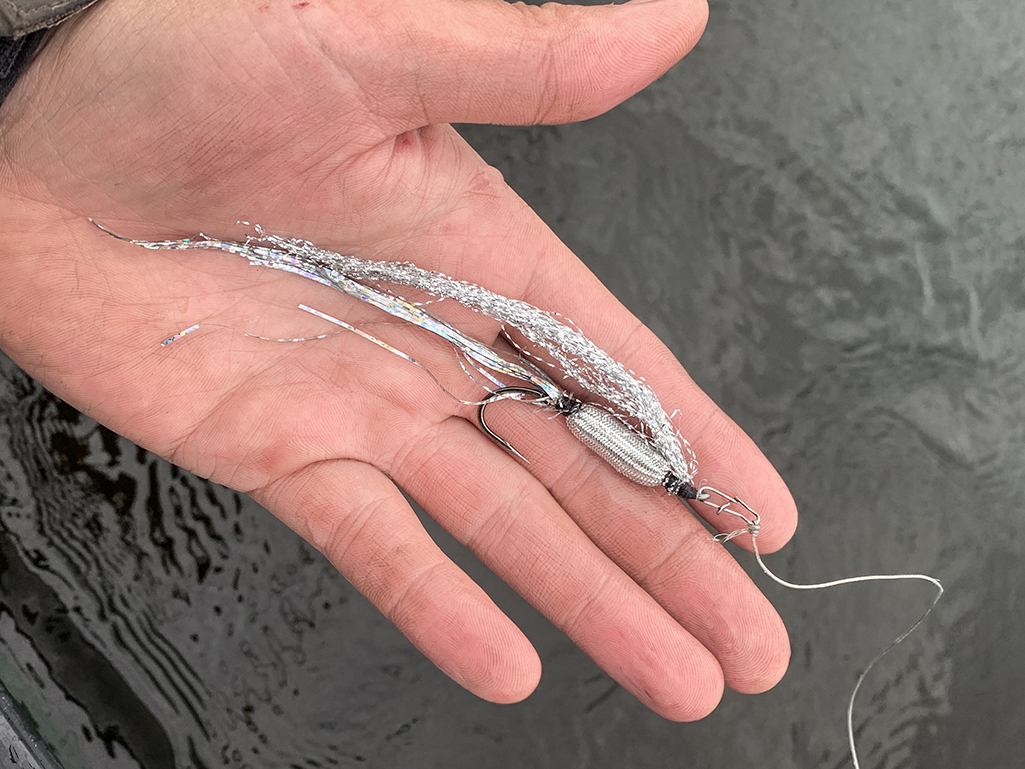
The ugly tinsel streamer

Aidan with the biggest lake trout of the trip caught on Beet Lake
While we found lake trout almost everywhere on Forrest Lake, the pike were concentrated amongst weed beds and a particular type of weed many anglers refer to as cabbage weed. It provides perfect cover and camouflage for pike, and they will often shoot out of the weeds devouring passing fish and lures.
On a couple of occasions I watched large pike slowly follow my streamers back to the canoe only to spook when they saw the canoe. I find these large fish can be particularly tough to catch on clear lakes like Patterson and Forrest. In the past, I successfully enticed these large fish to bite with a floating fly line and nearly static streamer presentation. This was the exact opposite of the fast sinking line and fast retrieve tactics we were using so successfully for lake trout. Rather than go through the trouble of switching fly lines and trying a much slower presentation we continued to fish the fast presentation around the cabbage weeds and it eventually paid off for Aidan.
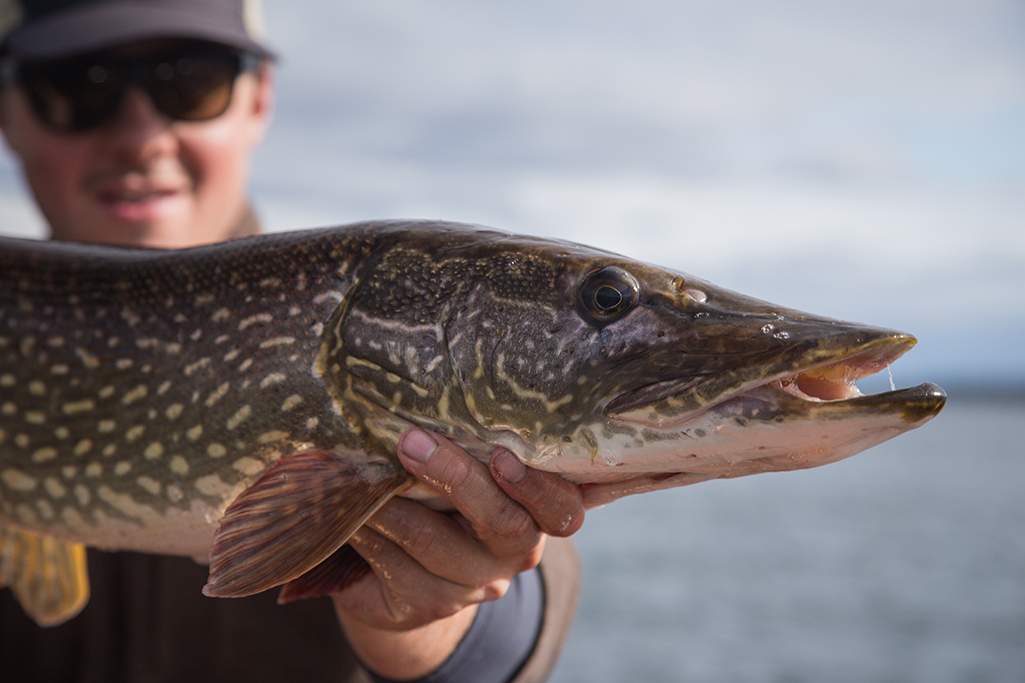
Aidan with a big pike

A large boulder with shoes on top for scale
Forrest lake’s ‘Black Sand Beach’ is also worth a mention. I have not explored all of the lakes in the region but this is the only beach I have seen or heard of with such oddly coloured sand.
Many of the smaller pebbles and even a few of the boulders appear polished and stained a very dark brown. As far as I know this phenomenon has not been studied and the cause of the unique coloration has not been determined. Discussions with other geologists have led to a number of theories for the coloration that include iron staining, manganese coating, graphite coating and even bitumen coating. Another unique occurrence in many of the lakes in the region is the somewhat rare blue quartz, which can be found on some shorelines.
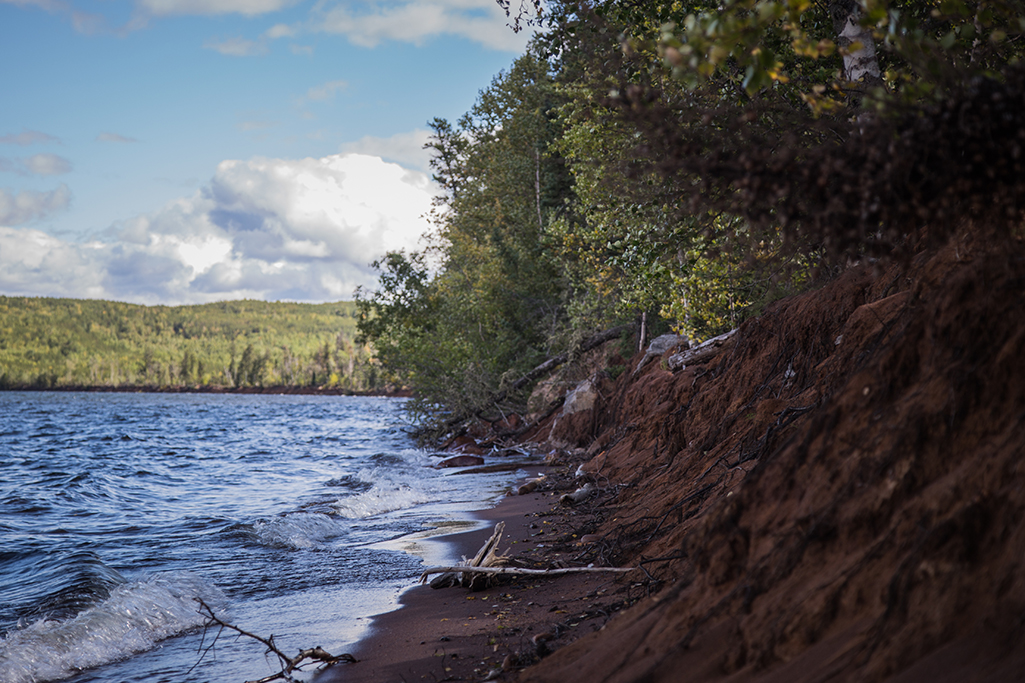
Forrest Lake’s Black Sand Beach

Taking a break from the wind and waves at the Black Sand Beach
Our last night at Forrest Lake was topped off with a clear starry night, some weak auroras and a meal fit for a king. As the evening wound down, we were talking about how great the fishing was and already trying to plan our next visit. Seeing someone new to the area develop a similar appreciation for it only confirmed my feelings that this area of the province is worthy of recognition.
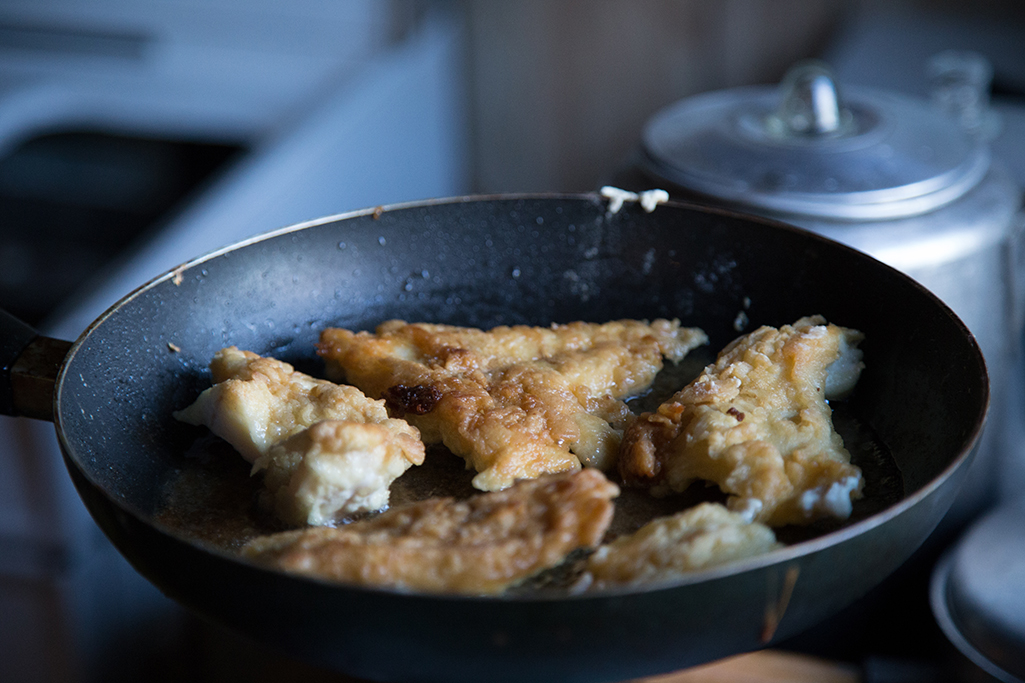
Battered pike cooking

Forrest Lake moonrise
During this time of restricted global travel, I want to encourage Saskatchewan residents to take full advantage of northern Saskatchewan’s numerous tourism opportunities and outfitters.
Saskatchewan truly is a hidden gem and underappreciated as a tourism and fly fishing destination. Do not overlook our northern lodges as an affordable vacation option that can create memories that last a lifetime.
Author: Levi Kalinsky
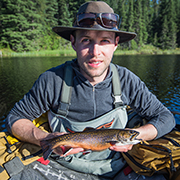
Instagram: @leviadventureguy
